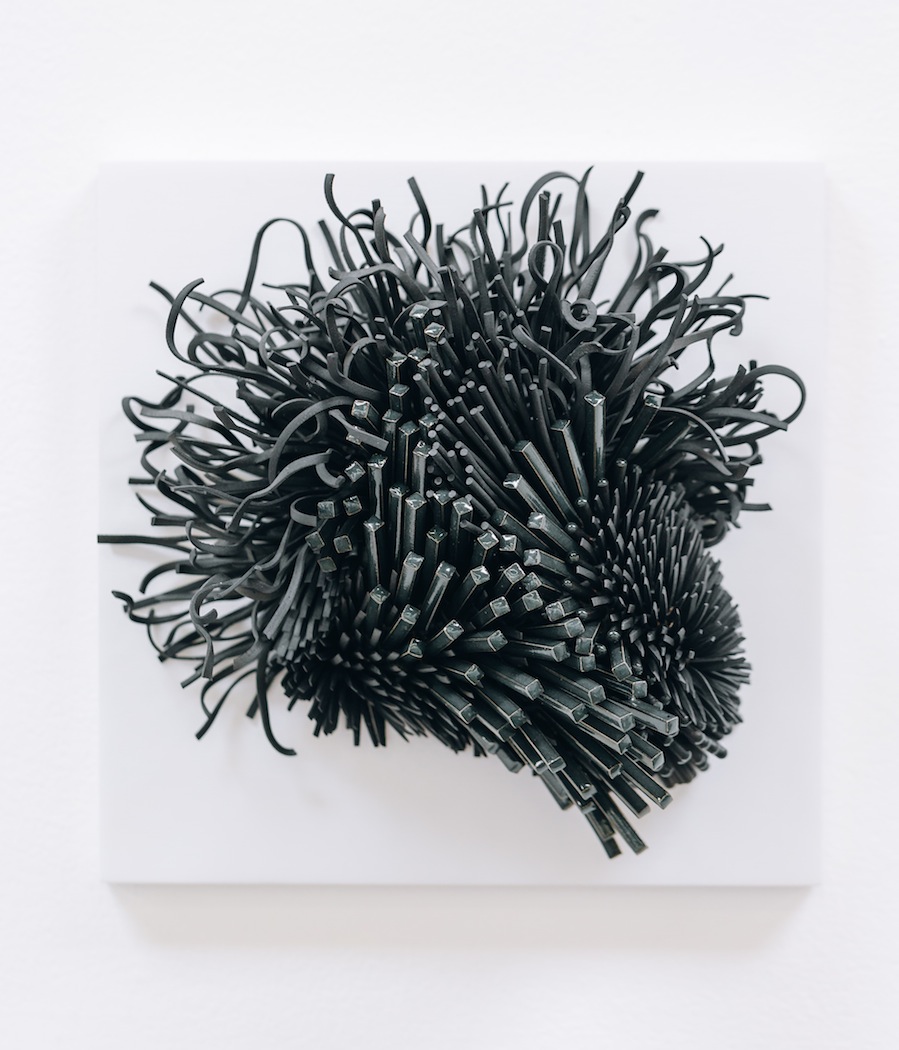Craft With Conscience: Zemer Peled
Zemer Peled // Sculptor // Los Angeles CA
Zemer Peled's work examines the beauty and brutality of the natural world. Her sculptural language is formed by her surrounding landscapes and nature, and engages with themes of memories, identity, and place. The association of porcelain with grace, refinement and civilization gets turned on itself when it is broken down into shards and the brutality of its jagged edges is juxtaposed with its insistent fragility. The material becomes both violent and beautiful, hard but breakable. When seen in the organic formations of Peled’s structures, a whole for the shards is recreated, this time estranged from its original context of neatness, tradition and cultivation but nonetheless unified by an overall cohesiveness of movement and composition.
Peled (b. 1983) was born and raised in a Kibbutz in the northern part of Israel. After completing her BFA from the Bezalel Academy of Art and Design (Jerusalem), she earned her MA at the Royal College of Art (UK). In recent years, her work has been exhibited internationally, including such venues as Sotheby's and Saatchi Gallery (London), Eretz Israel Museum (Tel Aviv), Nelson-Atkins Musuem of Art (Kansas City), among others. Her work is in many collections around the world.
Check out more of her amazing work on her instagram, website, or Facebook
Photo by: Cristina Schek
1. I began my #CraftWithConscience series as a way to simultaneously promote the work of other makers and to discuss the complicated issues surrounding creative inspiration and developing ones’ own visual vocabulary. The internet is an ever growing fixture in many artist’s lives and businesses, could you talk about the role the internet plays in your artistic and professional life?
The internet is an incredible tool for artists - especially with things like Instagram because it’s so visual. Through it I’ve been able to meet new people and get to see and learn about so many new artists. And not just artists - Instagram makes it possible for people in all kinds of fields to visually show their passion - I love looking at not only artists but also accounts of archaeologists, scientists, national parks etc. for inspiration.
Instagram is definitely my number one social media platform. It’s a great tool for collectors, galleries, and museums to find my work - I think every artist should have it. Sometimes it’s better than a gallery because way more people look at it than will walk through a single gallery space. It’s very powerful tool.
With Instagram I am able to share my thoughts, travels, creative life, and studio practice.
Photo by: Cristina Schek
2. Where do you find inspiration for your work? In what ways has the internet and/or social media impacted your design process?
Everywhere I go, everywhere I look.
I’m constantly inspired by nature, travelling, and hiking. The first place I go when I visit somewhere new is the botanical gardens. I love gardens, national parks, and taking in huge landscapes - Joshua Tree is my favorite place I found this past year.
I find inspiration on social media as well: new places, ideas for traveling. I don’t actually follow a lot of personal accounts, but I follow all the national parks, antique porcelain dealers, mudlarkers, archaeologists...
I’ve found so many new people and made many new connections through Instagram: I found this guy named Ted Sandling who mudlarks in the Thames - he followed me and I followed him for about a year. Then when I went to London last January I asked if he’d be willing to look for shards together in the river Thames
it was amazing! He has written a fantastic book about all the shards he has found and he is super interesting person. This is why I am a huge fan of Instagram - it is so easy to communicate with people from all over the world.
Photo by: Cristina Schek
3. Sites like Pinterest and Instagram are popular places for artists’ to share their own work. They also act as public visual archives, often leading to creative work by others that walks the line between ‘inspiration’ and ‘infringement.’ Have you encountered copies of your work online and how does it affect you? What are your strategies for dealing with it?
Yes I have encountered really bad copies. I love sharing process images from the studio because I find them the most incredible and way more interesting than the final piece but I find myself a lot of times deciding not to share things for that reason. It’s frustrating because lots of people nowadays are copying what they find online and not giving credit to the artist.
I don’t mind people being inspired or using techniques or getting ideas, but I would prefer them to be inspired and find their own voice instead of copying; to take the inspiration a step further with their own vocabulary.
I’m always trying to strike a balance between sharing too much and sharing too little.
"Black Dream 2"
4. Do you have any advice for aspiring artists or creative business people?
Be yourself - it’s not a cliché!
Don’t give a shit about what anyone says - follow your passion!
"Formed Shards" photos © Sylvain Deleu
5. Do you have any favorite blogs, artists, or Instagram accounts that you’d like to share?
Mudlurker and antiques specialist Ted Sandling
The Jealous Curator and her fantastic blog and podcast.
Chef Slavatore Martone is sharing inspiring videos showing off his skills.
Archeology Magazine @archeologymagazine because I love archeology
Porcelain specialist: Cyrille Froissart
And another favorite porcelain antique specialist is Andrew Baseman.
And finally the hilarious dogs account - dogs poorly photographed @dogspoorlyphotographed
"Under the Archway"















